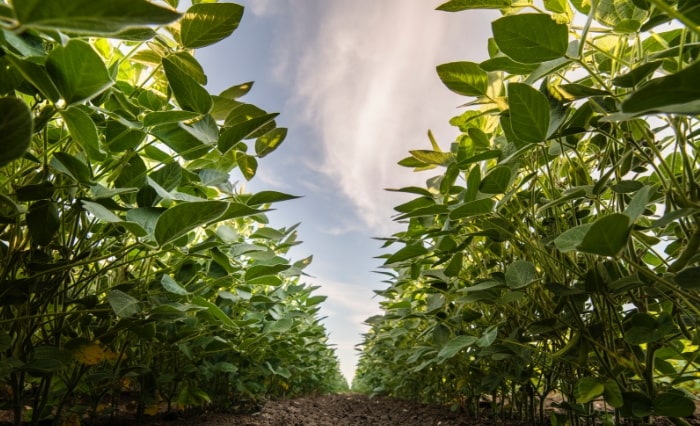
Sustainable agriculture policy
Increase financial incentives for climate-smart agriculture
Conservation practices pay off for farmers and farmers' business partners. That the value of reduced costs and risk, increased yield resilience and diversified income streams extends far beyond the farm field — benefitting farmers and their financial partners, including agricultural lenders, insurers, and landowners.
Private and public financial solutions should help farmers adopt resilient farming practices across the agricultural landscape, strengthening rural economies and communities.
Policy Ask
Financial institutions, including the Farm Credit System and private banks, should conduct climate risk assessments to ensure financial decision-making accounts for growing climate impacts and helps farmers both reduce emissions and build resilience to climate impacts such as drought and extreme rainfall.
Federal and state policymakers should support climate-smart practices that help farmers build soil health, for example through cost-share programs for cover crop seeds and more flexibility with planting cover crops and receiving prevented planting payments.

Additional resources
- Find great resources for finance and insurance professionals and for farmers and their advisers.
- Blog post: Banks take major steps to turn climate commitments into action for the global agriculture sector.
- Blog post: What does the executive order on climate-related risk mean for agricultural finance?
Ensure high-quality carbon credits deliver durable benefits
Voluntary carbon markets have the potential to generate new revenue for farmers who cut emissions of carbon dioxide, methane, and nitrous oxide, and who store carbon in soils, trees and perennial crops. To be successful, these markets need:
- Protections to ensure local communities' benefit and farmers of color have equitable access.
- Credits that are scientifically robust and based on agreed-upon standards.
- Easy-to-use measurement and verification tools so farmers have confidence that they are making a difference.
Currently, the cost of measurement and verification can be prohibitively expensive for farmers to undertake on their own. EDF scientists are looking to solve this challenge for soil carbon sequestration by researching the best methods for soil sampling and studying whether there are easier proxy measurements for soil carbon.
Read our research: https://www.edf.org/soilcarbon

Additional resources
Policy Ask
Support producers in reducing methane emissions
Methane will cause half of the warming projected for the next two decades and livestock alone accounts for one-third of global methane emissions. Working with producers to lower these emissions is essential for slowing climate change.
In the U.S. and around the world, there are practical solutions for reducing livestock and dairy emissions, such as improved manure management with methane capture technology and improved forage and feed. These are essential pieces of the solution.
We must also find new solutions, particularly for enteric emissions, by tapping into the great well of innovation that has made the global agriculture sector the force it is today.
Policy Ask
USDA, Congress, financial institutions and agricultural supply chain partners should farmers overcome financial and technical barriers to putting existing methane solutions in place at the pace and scale needed.
Policymakers and the private sector must also ramp up investment in research and development for innovative solutions like feed additives and vaccines to reduce enteric emissions.

Additional Resources
Optimizing fertilizer use cuts climate pollution and saves farmers money
Nitrogen is essential for life on Earth, but too much nitrogen from fertilizers can accelerate climate change and degrade water, soil, and air quality. Additionally, nitrogen fertilizer costs can represent a substantial cost to many farmers. Getting the balance right where farmers optimize yields, minimize excess nutrients, and protect long-term soil health is important. However, existing methods of measuring and monitoring excess nitrogen are expensive, inaccurate, and difficult to scale.
Policy Ask
Federal and state policymakers should support climate-smart practices that help farmers optimize fertilizer use. An easy example of this would be adopting and increasing cover crop cost share programs.



